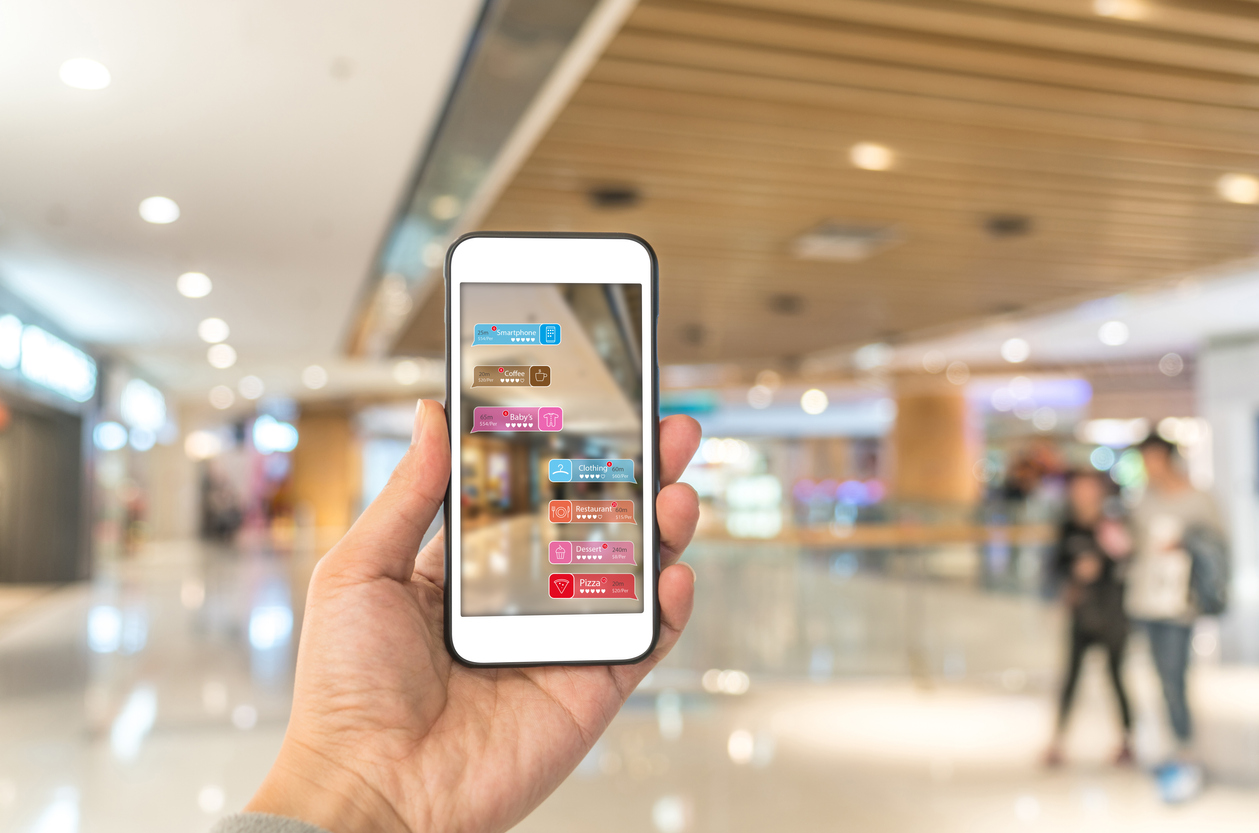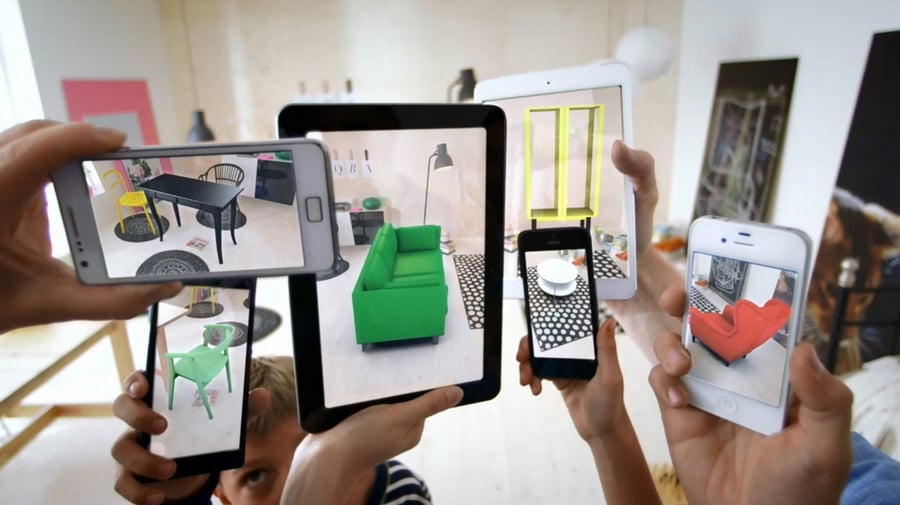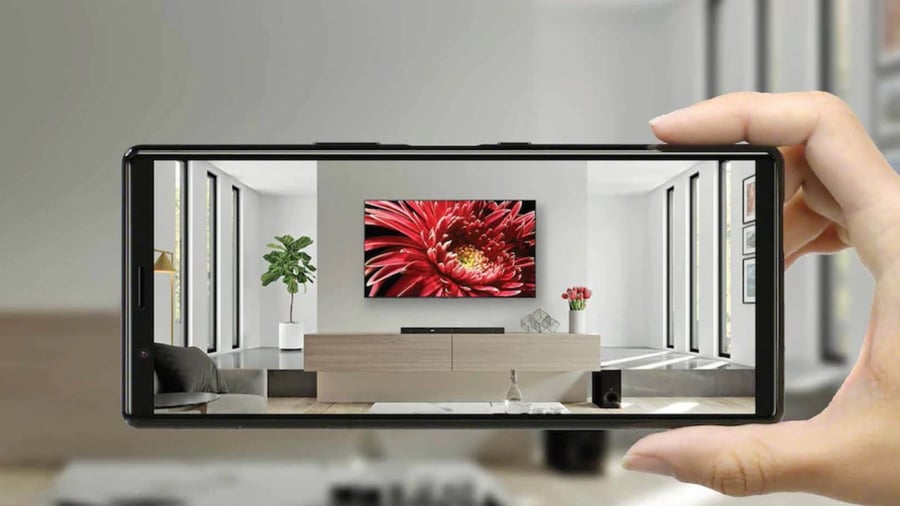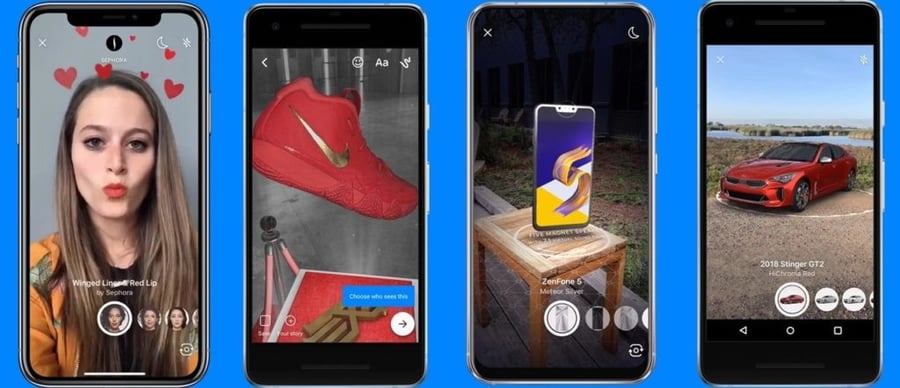
Online shoppers are more likely to make purchases on websites that offer augmented reality (AR) technology. But, those shoppers are not only making the purchase simply because the site offers AR technology.
They are likely to purchase items because AR technology compels them to do so in a way ordinary eCommerce websites don't. AR gives them a feeling of certainty about the product in a way 2D pictures or words can’t.
Augmented reality bridges the gap between modern eCommerce stores and traditional brick-and-mortar shops. AR is capable of giving customers a view of the product as they'll see it physically. It’s an innovation that brings a semi-realistic presence to online shopping and boosts eCommerce sales by improving shoppers' experience.
AR applications in the world of eCommerce are limitless if you know what it is and what you can do with it. Here, we’ll take a deep dive into the ocean that is AR and how you can integrate it into the eCommerce experience.
What is Augmented Reality?
Have you tried any funny filters during a video call lately? What about catching a Pokémon on Pokémon Go? If you’ve done any of that, you're already enjoying the applications of augmented reality, a quickly evolving immersive technology with limitless applications.
Augmented reality is a type of technology that expands our physical world by superimposing digital information on it. It offers a physical view of our real-life environment with digitally created information. AR can layer images, sound, and text in a real-life environment, and people can view the results via a screen. This action alters your perception of the real-life environment as it is, to what the AR makes it to be.

The information superimposed on the real-life environment is sensory information — what you can see or hear. The objective of AR can either be constructive or destructive or informative. Usually, the intent is to seamlessly combine physical and digital worlds to enable a more comprehensive view of what a product will look like.
Augmented reality may sound a bit abstract if you're yet to experience it. It sure sounds like something out of a Hollywood movie. However, it’s real, engaging, and is capable of changing how we see things. It has numerous applications and can be pretty advantageous to eCommerce.
Augmented reality may only be a recent innovation, but immersive technology has been around for a while. It's been around even before the invention of iPhones and social media. However, it was not ready for consumer use until recently. And since then, it has found applications in augmented and virtual reality.
Is Augmented Reality Different from Virtual Reality?
Short answer: Yes!
Virtual reality and augmented reality are the two primary forms of immersive technology available in the present day. Virtual reality is the more popular of the two, and people easily confuse it with augmented reality.
Although, both are quite different and in many ways. The basic idea behind virtual reality is to create an entirely new reality for the user. The concept involves taking a user from the actual reality and placing the individual in a new, digitally created world.
Users need to wear a VR headset specially designed with computer screens to immerse themselves in this new world fully. So, while the user is physically still in the actual reality, they see and sense themselves in another world.
Augmented reality, on the other hand, does not create an entirely new reality; it works with the existing environment. It augments the existing environment by layering digital items onto real-world elements. It’s similar to the way graphic designers layer items on images when editing in Photoshop.
AR technology enables you to add to or alter your perception of the environment while distinguishing virtual items from real ones. In virtual reality, you can’t physically see any real-world elements.
You don’t need any headset or sensors for augmented reality. You can easily view the augmentations on your smartphone or computer on the go. There are even AR-enabled eyeglasses for a more stylish look. You can also go for some light AR headgear if that's what you desire, or for gaming purposes.
The four significant differences between AR and VR are:
- Virtual effect on the environment: This is how they alter your perception of the environment.
- The equipment you need to use: Virtual reality uses specialized headgear, while you can view AR on your cell phone.
- The type of environment in which you can use them: You don't want to use virtual reality in a congested environment as you'll not be able to differentiate between real-world elements and digital items.
- The energy it takes to operate them: You'll have to charge your VR headset frequently to use it or keep it plugged in at all times.
Ways to Integrate Augmented Reality in The eCommerce Experience
AR can transform the customer’s shopping experience. That's an exciting prospect when you think about what that can mean for business.
But how can you best apply this growing innovation to guarantee a positive transformation in customer experience?
Here are four ways to integrate augmented reality into your eCommerce business.
1. Preview Item Placement

In the eCommerce business, you’ve probably come across situations of customers buying the wrong products. It’s usually because the customer wasn't able to physically check if the product fits their needs.
For example, a customer may buy furniture online and later realize it doesn’t fit with their existing interior decor. Customers can avoid this if they can preview the item placement before buying it. Cue AR technology.
Item placement previews give the customer a view of what the item will look like in an environment of their choice. They can check what a couch will look like in their living room before buying it or if a fridge will look nice and fit in with the kitchen cabinetry.
Item placement previews provide eCommerce customers with a wide variety of options and enable them to make purchase decisions. It saves vendors unnecessary work, red tape, and inventory control in case of returned items as well. You also get to avoid negative reviews from customers if they're unable to return the goods.
Previewing item placement is a functionality that’s fast gaining popularity among eCommerce companies. A good example is the Sony Envision TV AR app that offers a "try before you buy" option. Of course, the trial will be digital, so customers can view how the TV will look in the space they intend to place it.
Potential customers will be able to see what the TV will look like in different areas of their home. This way, they can determine the best size to buy and the best place to put the TV before buying it. This can all be done from their smartphones in the comfort of their home.

2. Virtual Try-On Solutions
Have you ever bought an item online but had to return it because it was the wrong size, fit, or color? Cases of "what they ordered vs. what they got" and buyer's remorse are all too familiar.
It's a huge headache for many eCommerce businesses – maybe even yours. Nobody likes it when customers return clothing and other items because they don't fit. The general reaction is often something along the lines of "how am I to know it won't fit?"
Well, now there's a way for you and the customers to know the right fit, color, and size. AR removes the need for guesswork and hoping the item is suitable.
Virtual try-on solutions enable customers to see how the item will look on them via a screen. The customers can see if the textile is acceptable or the lipstick is the perfect color, all via their phone screens. It creates an effect resembling a person looking in the mirror and seeing what they look like using or wearing the item.
Of course, certain brands offer a home try-on facility whereby they ship samples to your door that you can try on. However, that can cost a significant amount of money. AR provides a cheaper alternative, and the fact that many brands are using it is proof of the effectiveness of AR.
Today, many brands in the fashion and lifestyle industry use AR to improve customers' eCommerce experience. A prominent mention is the eyeglass maker Warby Parker.
Using their AR-enabled app, you can see how a pair of eyeglasses will look on you before buying it. Many more industries are also leveraging AR to improve customers’ shopping experience and, consequently, their public relations.

Source: Wired
3. Social Media Filters
This is the typical application of AR. The most common are Snapchat filters, where you can toggle between various features before taking a picture.
You can also access these properties on the Instagram story feature and many other social media platforms. It’s possible to spice up video conversations, calls, three-way calling, and group video chats with the right AR filters.
What people do for fun has now become an integral part of the eCommerce experience. Many brands are jumping on the use of AR in social media for three main benefits:
- Increasing brand and product awareness: Social media filters offer a great way to showcase new products to customers by having them test how they'll look on them. If it looks good, they'll like it, and even snap a picture and share it with their friends on social media. That way, they're also “marketing” the product to their friends.
- Increasing brand engagement: As the user in our previous example shows the picture with the product to their friends, their friends also begin to engage with the product. If they like what they see, they’ll also potentially try out the feature and maybe even buy the real item. You can even encourage these users to tag your brand in their stories while they feature your products.
- To stand out: With so many brands engaging in social media marketing these days, you need to take advantage of modern technologies. Incorporating AR is one such advantage. It's an excellent way to get people to notice what you have to offer.
Social media filters offer many creative methods to interact with your customers via social media. It can combine both of the previously mentioned points and more.

Source: Poplar
4. Interactive User Manuals
Most end users find user manuals in text form long and tedious. Usually, they skip to the part they think is essential. Some people don't even read the manual at all. Instead, they try to figure things out on their own.
Luckily, user manuals are becoming more engaging and interactive. Manufacturers are now using webinar platforms and interactive prompts to make guides more exciting and educative. They are more creative and help users to understand better how the product works. But AR takes it to a whole new level.
AR user manual apps scan the product's image and provide instructions on what to do using pointers, animations, and text. You can use AR apps to indicate components of a product and the functions for users. This makes the process of getting to know the product more interactive and far more interesting.
If you offer maintenance or other forms of services online, AR will help immensely. By using AR prompts, pointers, and animations, you can quickly advise your customers on what to do.
The process of web teleconferencing, customer communication, and support is more interesting with AR. It all depends on how creative you can be with it.
AR and The Future of eCommerce
eCommerce is a fast-growing, competitive industry, with the internet as its playground. The possibilities with augmented reality are limitless, and you can achieve pretty much anything you can imagine. Key players are already implementing AR in their businesses. It’s time for you to board the AR train!





Leave a reply or comment below